Introduction to Paints
Important Point
- Paints are commonly used for the decoration of the Structure. Paints are one of the important parts which give a good appearance to the Structure.
- There are various types of paints are available in the market such as aluminium paint, cement paint, emulsion paint, enamel paint, plastic paint, silicate paint and oil-based Paints etc.
- Many people get confused between the emulsion paint and oil-based Paints. It is very difficult to choose the Best Paint for our house.
- Because there are different types of paints are available in the market. Each painting has different applications and qualities.
- In this article, we will give you a comparison between the Emulsion paints and oil-based paints which will help you to clear all your doubts and help you to choose the best paint for your house.
- The Paints are the coating of the fluid material which is applied on the various surfaces as the final finish. Paints are used for providing a coating on the surfaces like walls, ceilings, wood and metal work etc.
Also, Read: Fish Ladder | What Is Fish Ladder | Types of Fish Ladder | Fish Ladders in Dams
Purpose of Providing Paints
There are various purposes for which the Paints are provided on the surfaces are as follows
- To provide a coating to the different surfaces.
- To protect the wooden surfaces from decay.
- To provide the decorative fish and obtain a clean and pleasing surface.
- To protect the surface from the aggressive effects of weathering.
Properties of Good Paint
- Paint should adhere to the surface on which it is applied.
- A painted possesses good covering power.
- The paint should be smooth, hard and wearing resistance.
- The paint should not be affected by weathering agencies.
- The paint film on drying should be impervious.
- Paint should be uniform in thickness when it is applied on the surface.
- The paint should offer a smooth and uniform surface.
- Paint should be durable and strong enough to resist the penetration of moisture.
What Is Emulsion Paint?
- Emulsion paint it is a type of paint which consists of a vehicle such as polyvinyl acetate, synthetic resins usually chlorinated rubber etc as the main constituent.
- In the case of the emulsion paints because of its constituents, the emulsion paints imparts an excellent quality of the alkali resistance. Emulsion Paints are quick-drying Paints which has good workability and durability.
- Emulsion Paints are recommended to use on bricks and masonry surfaces which contain free alkali. Emulsion paints are Inflammable paints. Emulsion Paints have final finish such as mat, smooth, eggshell and glossy.
Advantages of Emulsion Paint
There are various advantages of emulsion paint are as follows
- Emulsion paint can be used for painting on any surface such as wooden, concrete and metallic etc.
- The emulsion is inflammable so that it does not cause harm.
- Emulsion paint gives a glossy and uniform finish to the surface on which it is applied.
- Emulsion Paints does not crack due to the temperature variations.
- The washability of the emulsion paints is very good and it can be also washed with the help of water.
Also, Read: Cantilever Bridge | Cantilever Bridge Advantages and Disadvantages | Cantilever Bridge Facts
Disadvantages of Emulsion Paint
The disadvantages of the emulsion Paints are as follows
- Emulsion Paints have a low rate of drawing in an atmosphere where the humidity is very high.
- Emulsion Paints are more expensive as compared to oil based Paints.
Also, Read: What Is a Low E Glass | Types of Low E Glass | Advantages & Disadvantages of Low E Glass
What Is Oil Based Paint?
- Oil based Paints are the ordinary paints which essentially consists of two constituents which are based and vehicle. The oil painting also contains other elements such as drier, inert filler and colouring pigments etc.
- The Oil Paints are widely used in all types of surfaces which includes woodwork, walls, ceilings, metal work as well as all types of internal works.
- Oil-based Paints possesses the qualities of good opacity as well as good appearance. The oil based Paints are fairly workable paint which has resistance against the weathering action of the atmosphere.
- Oil based paint has final finish such as high gloss and opaque.
Advantages of Oil Based Paint
The different advantages of oil based Paints are as follows
- Oil based Paints gives a good and high gloss finish.
- Oil based Paints are less expensive as compared to the emulsion Paints.
- Oil based Paints gives a thicker layer to the surface due to which there is less number of coats are required.
- The oil based paints are more durable and hard.
- Only based Paints have good adhesion property.
Also, Read: Difference Between One Way Slab and Two Way Slab | What is Slab
Disadvantages of Oil Based Paint
The disadvantages of oil based paints are as follows
- The oil based paints take longer time to dry.
- Oil based paint cannot be used on the untreated walls or the surfaces without any application of primer.
- The oil based Paints consists of toxic elements which may cause harm.
- Oil based Paints have strong order and they are flammable in nature.
- Oil based Paints can track the dust particles and insects when they are in the which condition.
Difference Between Emulsion Paint and Oil Paint
The differentiation chart between the Emulsion Paint and Oil based paints.
| Sr.No. | Emulsion Paint |
Oil Based Paint |
|
|
1 |
Definition | Emulsion paints are the water-based paints with various non-volatile substances like Alkyd resins, acrylic resin and epoxy as a binder. | Oil based paint is a type of paint which consists of pigments suspended in the drying oil commonly linseed oil. |
|
2 |
Odour of the paint | Emulsion paints have a light odour. | Oil based paints have a strong odour. |
|
3 |
Durability of the paint | Emulsion paints are more durable and do not crack. | Oil based paints are less durable as compared to the emulsion paint and turn yellow with time and may cracks. |
|
4 |
Solvent | In the Emulsion paints water is used as a solvent. | Oil based paints do not require a solvent. |
|
5 |
Use of Thinner in the paint | There is no need for thinner in the emulsion paints. | Oil based paints required naphtha, turpentine and white spirit as a thinner. |
|
6 |
Binder | Alkyd resins, acrylic resin and epoxy are used as a binder in the Emulsion paints. | Linseed oil, tung oil, poppy oil and nut oil are used as a binder in the oil based paints. |
|
7 |
Drying time of the paint | Emulsion paints dries quickly. | Oil based paints take time to dry. |
|
8 |
Washability | The washability of the emulsion paints is good and it can be washed with the help of water. | The washability of the oil based paint it is average and it cannot be washed with the help of water. |
|
9 |
Hardness | The hardness of the emulsion paints is more. | The hardness of the oil based paints is less as compared to the emulsion paints. |
|
10 |
Coverage Area | One litre of emulsion paint can cover 100-160 square feet of area for two coats. | One litre of oil based paints can cover 100-130 square feet area for two coats. |
|
11 |
Flexibility of paints | Emulsion Paints are flexible and do not crack due to the variation in the temperature. | The oil based Paints are not flexible and can crack due to the variation in the temperature. |
|
12 |
Flammability of paints | Emulsion Paints are Inflammable. | Oil based paint is flammable. |
|
13 |
Toxicity | Emulsion Paints are completely safe for the human and does not cause any harm. | Oil based Paints consist of toxic elements which cause irritation of eyes and skin. |
|
14 |
Application of paints | The emulsion Paints can be used on both exteriors as well as interior areas. | Oil based paints are generally used for internal areas. |
|
15 |
Cost of the paints | The cost of the emulsion paint is more as compared to oil based Paints. | Oil based Paints are less expensive as compared to the emulsion paints. |
|
16 |
Available packs of the paints | The emulsion paints are available in the packs of 1 litre, 4 litres, 10 litres and 20 litres. | The Oil-based paints are available in the pack of 500ml,1 litre,4 litres, 10 litres and 20 litres. |
Which One Is the Best Emulsion Paint or Oil-Based Paint?
- The selection of the best paint for your home depends upon your budget and requirements.
- Emulsion Paints are widely used as compared to the oil based Paints because the emulsion paints do not cause any harm to the humans where the oil based paints consist of the toxic elements which can cause irritation of eyes and skin.
- If you are planning to colour the children room recommended using emulsion paint because the image and paints are saved and do not cause harm as far as the safety of the children is concerned.
Introduction to Paints
Paint can be used as a coating to decorate a surface or substrate. It has a wide variety of colour, texture, finishes and gross level.
Paint can be designed to protect the surface or substrate against ultra-violet rays, humidity, chemicals, corrosion, algae, abrasion etc.
Purpose of Providing Paints
Paint is used to protect all sorts of buildings and structures from the effects of water and sun. Wooden buildings such as houses are usually painted because a coat of paint prevents water seeping into the wood and making it rot. The paint also helps to prevent the wood from drying out in the hot sun.
Also Read: Difference Between CPM and PERT | What Is CPM & PERT
What is Emulsion Paint
Emulsion mostly refers to paint used for walls and ceilings. It’s water-based with vinyl or acrylic added for durability. It comes in a range of finishes: gloss, satin, eggshell, silk, flat matt or matt.
Pros of Emulsion Paint
- Emulsion paints are less toxic as compared to other oil based paints and have less volatile organic compounds (VOCs) and also cause fewer problems such as skin irritations.
- Emulsion paints are easy to apply and dry quicker than other water-based paint and oil based paint.
Corn of Emulsion Paint
- Emulsion paints have low drying rate in high humidity atmosphere.
- It may be more expensive than the oil based paint.
Advantages of Oil Based Paint
- It goes on smoother.
- Covers more thoroughly in one coat.
- Shrinks less.
- Takes longer to dry so you have more working time.
- Holds up well in high-traffic areas.
Disadvantages of Oil Based Paint
The main disadvantage of oil–based paint is the strong odour, which is quite invasive, and the paint does take significantly longer to dry, so care is required with any dusty work, and ensuring that nothing is likely to make contact with the wet surface.
Difference Between Emulsion Paint and Oil Paint
Emulsion paint is the water-based paint with various non-volatile substances such as alkyd or acrylic resin as the binder. Whereas oil–based paint is a type of paint that consists of particles of pigment suspended in a drying oil, commonly linseed oil.
What Is Emulsion Paint?
What is Emulsion Paint? Emulsion paint is water-based paint, that consists of pigment, emulsifier, coagulant, and water. It’s called emulsion because the pigments are dispersed in water emulsified with an emulsifying agent. Emulsion paints are quite popular for their durability, easy-to-use features, and low cost.
Introduction to Paints
Paint is any pigmented liquid, liquefiable, or solid mastic composition that, after application to a substrate in a thin layer, converts to a solid film. It is most commonly used to protect, color, or provide texture. Paint can be made in many colors—and in many different types.
How to Seal Emulsion Paint on Wood?
Emulsion is water based so it is best to use a water-based varnish such as Everbuild Quick Drying Clear Varnish (opens in new tab) to add protection to the emulsion.
Properties of Emulsion Paint
Emulsion paint is water-based paint, that consists of pigment, emulsifier, coagulant, and water. It’s called emulsion because the pigments are dispersed in water emulsified with an emulsifying agent. Emulsion paints are quite popular for their durability, easy-to-use features, and low cost.
Types of Emulsion Paint
Also known as emulsified paints, there are many types of emulsion paint available, with the most common being gloss, semigloss, matte, eggshell, or velvet.
Oil Paint Vs Plastic Paint
Oil paint and plastic paint are two popular types of paint used for various purposes. Here are some differences between them:
- Composition: Oil paint is made by mixing pigments with a binder of linseed oil, while plastic paint is made from synthetic resins, such as vinyl, acrylic or epoxy.
- Drying time: Oil paint dries slowly, taking days or even weeks to completely dry. Plastic paint dries faster, typically within a few hours.
- Finish: Oil paint has a rich, glossy finish, while plastic paint can have a variety of finishes, including matte, satin, or high-gloss.
- Durability: Oil paint is more durable and resistant to wear and tear than plastic paint. It can withstand harsh weather conditions, moisture, and fading due to exposure to sunlight.
Oil Based Emulsion Paint
Oil-based emulsion paint is a type of paint that uses an oil-based binder to suspend pigments in water. This type of paint is often used for exterior surfaces, as it offers better water resistance and durability than water-based emulsion paints.
Oil-based emulsion paint has several advantages over other types of paint. It offers better adhesion to surfaces, which means it can be used on a wider range of surfaces, including metal, wood, and masonry. It also offers better resistance to abrasion, making it ideal for high-traffic areas.
Oil Based Emulsion
An oil-based emulsion, also known as an oil-in-water emulsion, is a type of mixture in which droplets of oil are dispersed within a continuous phase of water. This is achieved by adding an emulsifying agent, such as a surfactant, to the mixture.
Difference Between Oil Paint and Plastic Paint
The main difference between these two paints is the binder that holds the pigment together: Acrylic paints are water soluble, meaning they can be dissolved with water, while oil paints aren’t.
Difference Between Acrylic and Emulsion Paint
Retail acrylic paints ARE emulsion paints. Acrylic resin binders are not water soluble. They are only soluble in toxic and highly flammable organic solvents like toluene, acetone, xylene, etc., . Thus they they are mixed with an emulsifier (essentially soap) to be able to mix them with water, thus the ’emulsion paint’.
Emulsion Paint Is Used For
What is emulsion paint used for? For the most part, emulsion paint is exclusively for interior walls and ceilings. It’s the most common type of interior paint. You can use emulsion paint on previously painted interior walls or newly plastered walls.
Wall Emulsion Paint
Wall emulsion paint is a type of water-based paint that is commonly used for interior and exterior walls. It is a mixture of water, pigments, binders, and additives that are designed to provide a smooth, durable, and washable finish. Emulsion paint is preferred over oil-based paints due to its low odor and easy clean-up with soap and water. It also dries faster and has less of an impact on the environment.
Emulsion Paint for Walls
Emulsion paint is a popular choice for walls as it is easy to apply, dries quickly and is available in a range of colors and finishes. Emulsion paints are water-based and generally have a low odor, making them a more user-friendly option compared to oil-based paints.
Like this post? Share it with your friends!
Suggested Read –
- Lumber Vs Timber
- What Is Plaster | Requirement of Good Plaster | Types of Plasters
- What Is Plumbing Joint | Types of Plumber Joint | Different Types of Pipe Joints and Where Are Use
- What Are Columns | Different Types of RCC Columns | Round Column Vs Square Column | Pillar Vs Column
- What Is Canal | Classification of Canals | What Is Perennial Canal | Advantages & Disadvantages of Canal Irrigation
- What is Waffle Slab| Waffle Slab Details | Advantages & Disadvantages Waffle Slab | Waffle Slab Design | Construction of Waffle Slab
- Calculator for Cutting Length of Stirrups | Cutting Length of Rectangular Stirrups | Cutting Length of Square Stirrups | Cutting Length of Circular Stirrups | Cutting Length of Helical Stirrups | Cutting Length of Diamond Stirrups
Originally posted 2023-04-13 18:13:42.
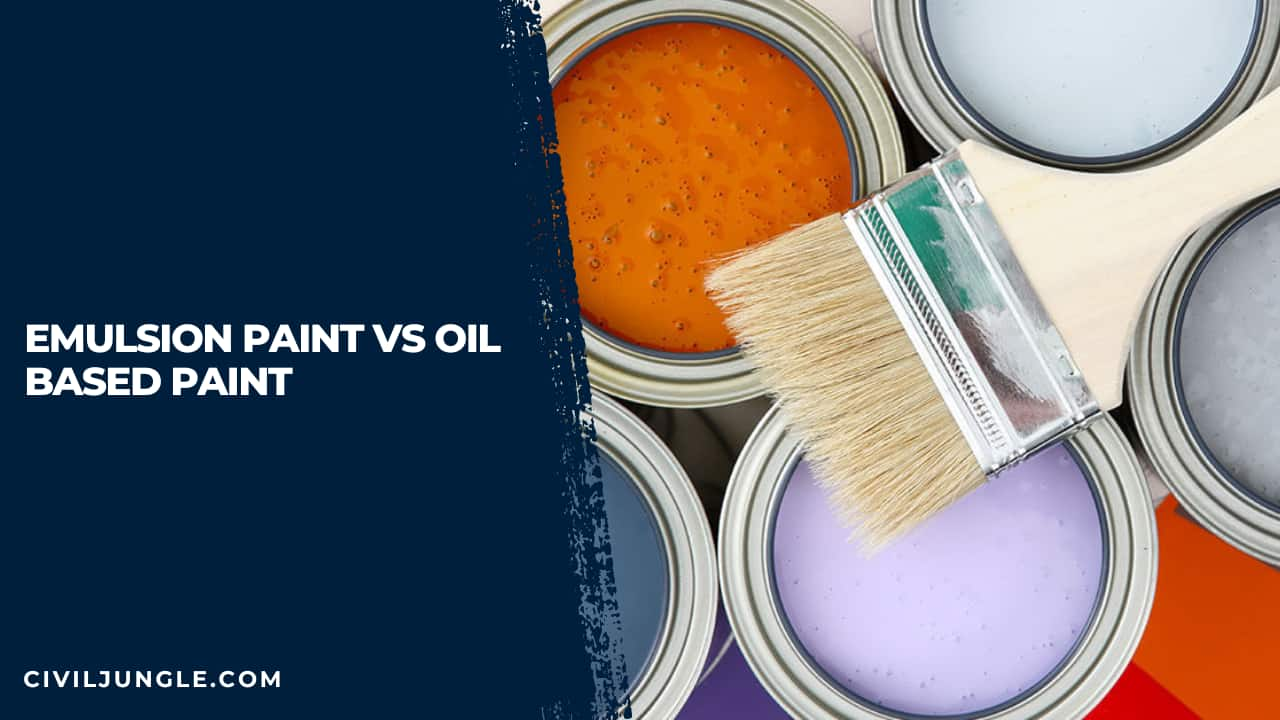
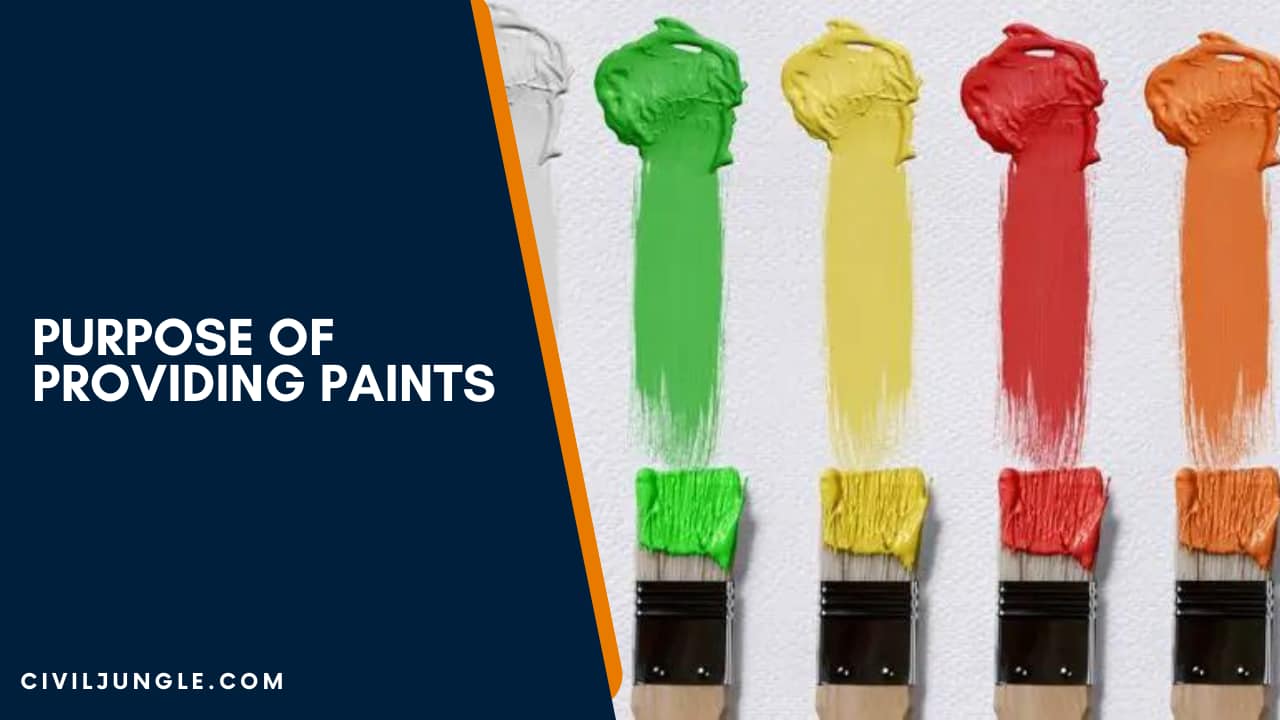
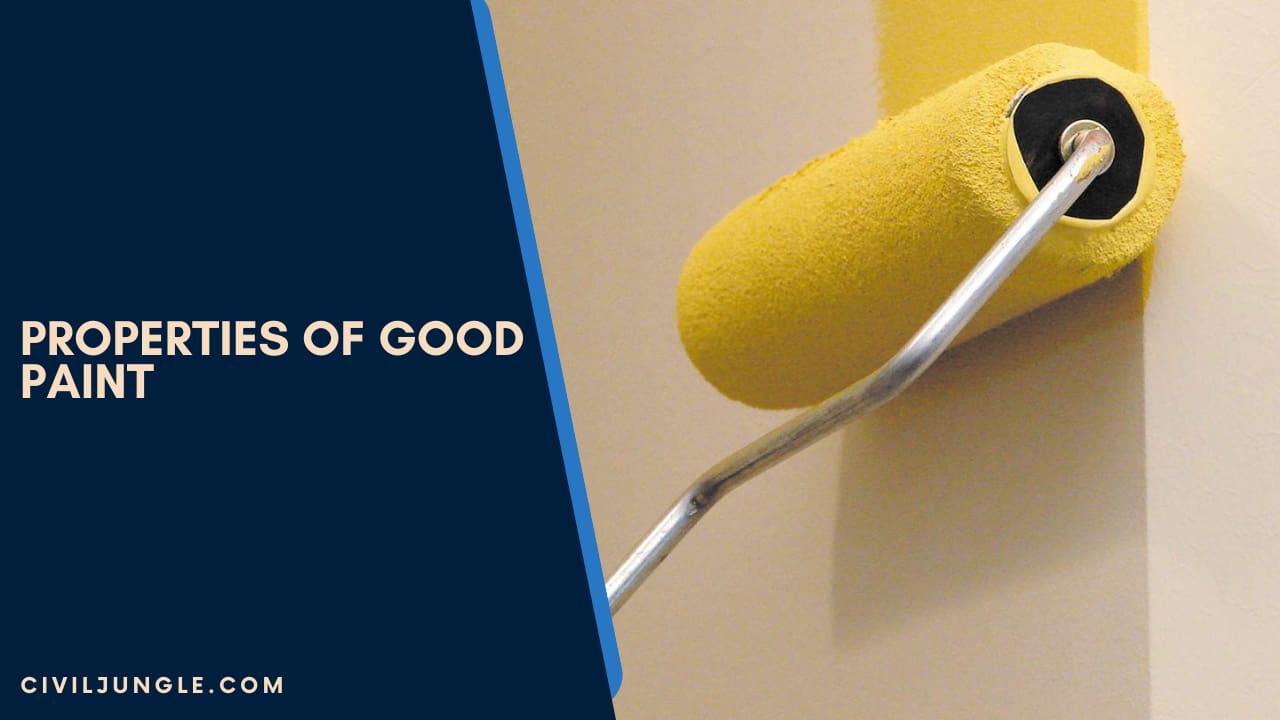
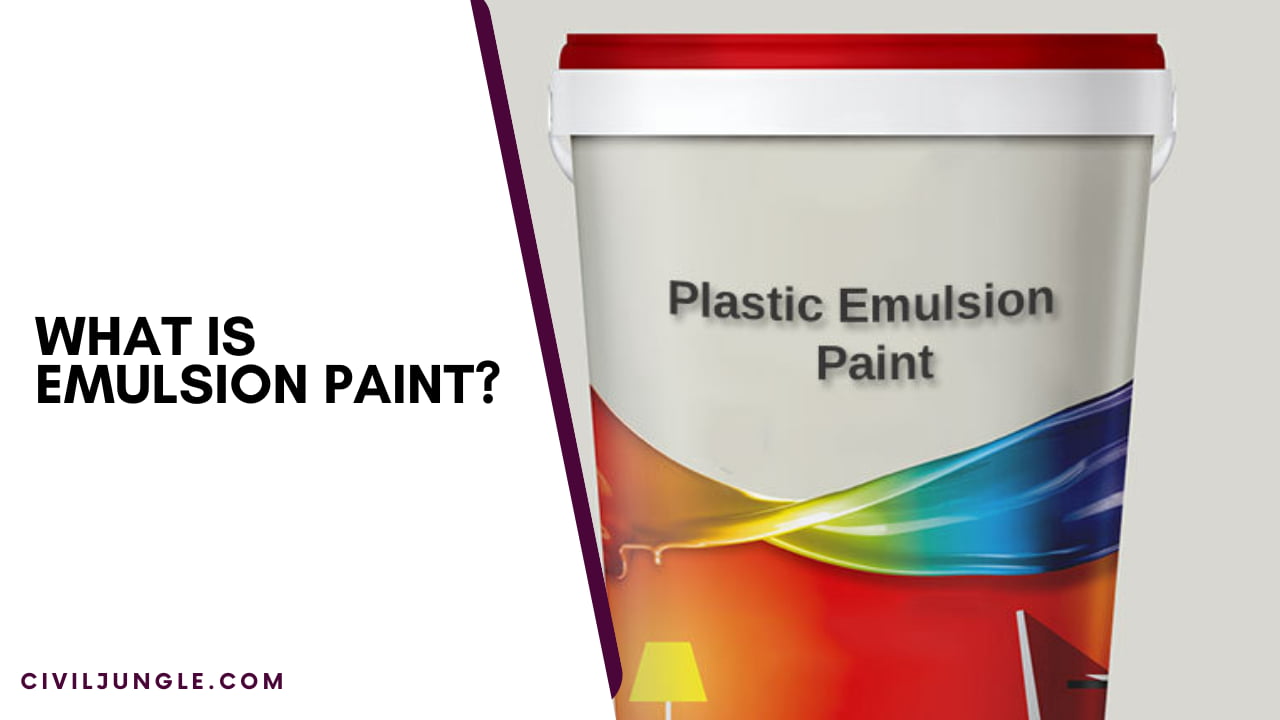
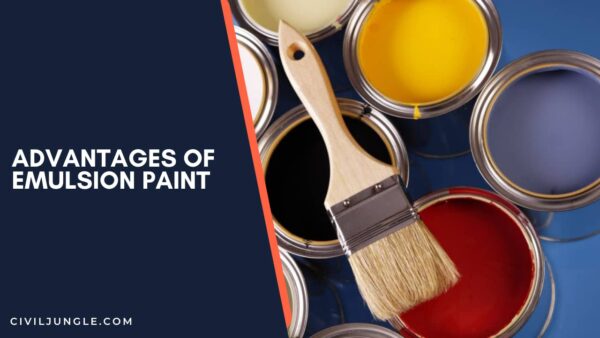
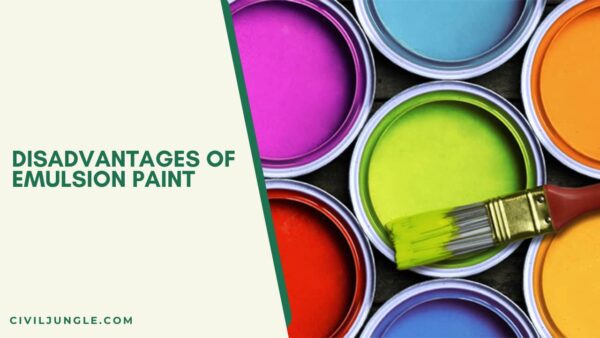

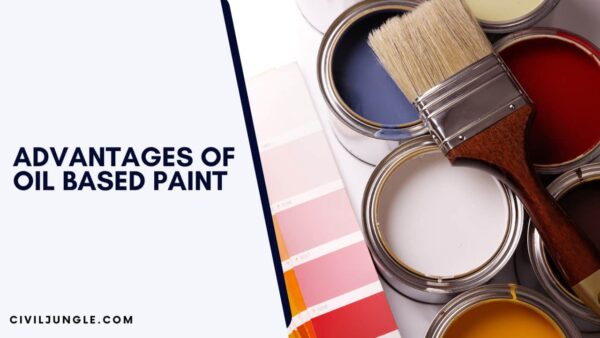

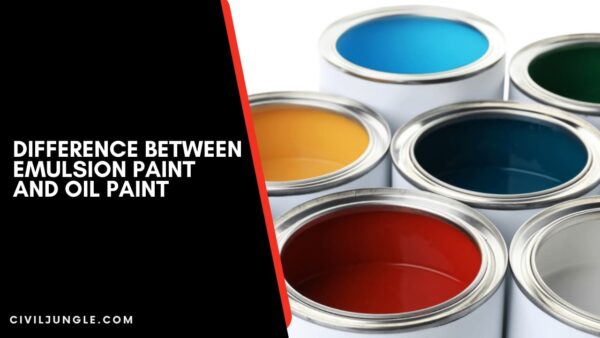
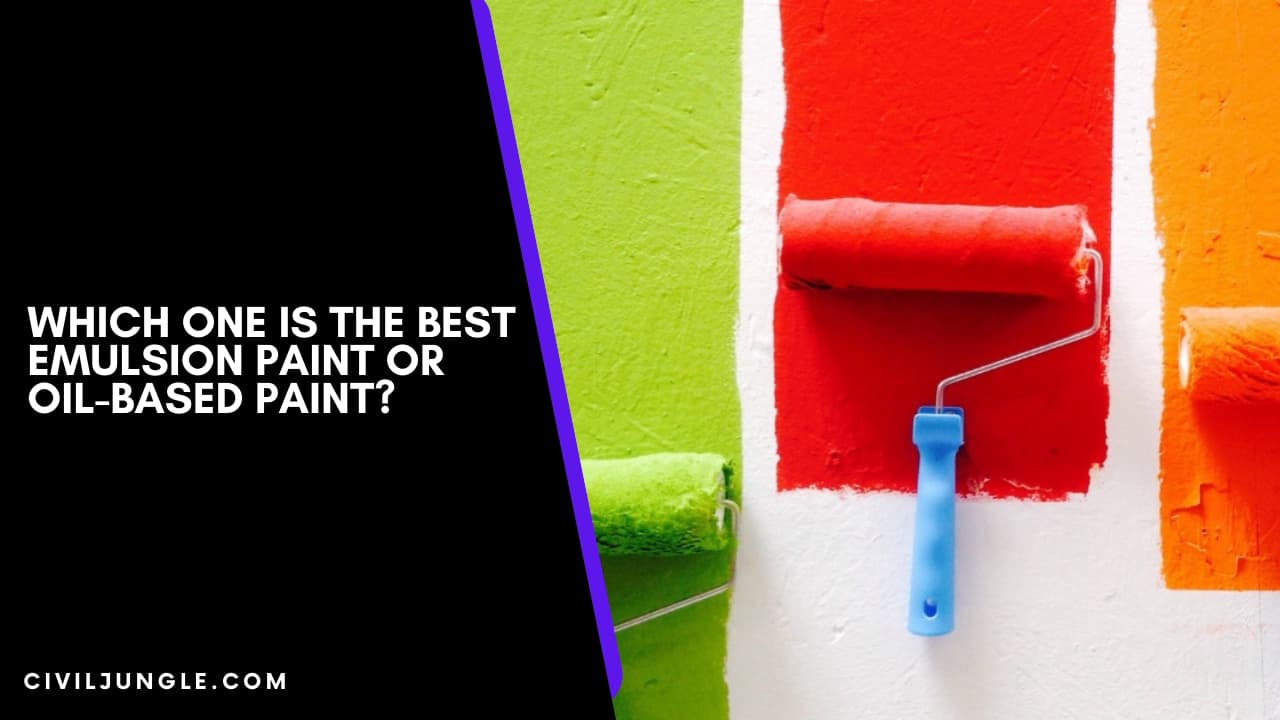

Leave a Reply